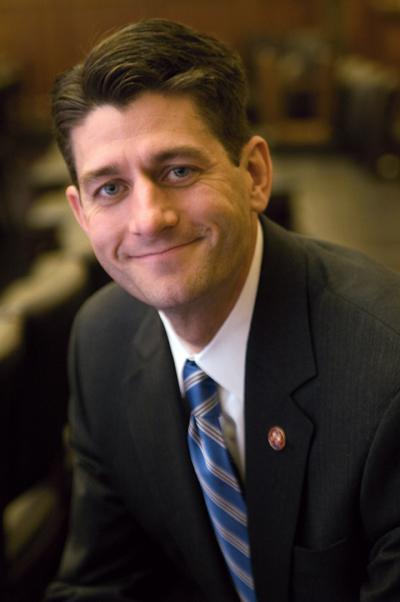
Ryan himself, a rising star in the GOP
In the midst of a budget battle that has had the government wavering on the brink of shutdown, Republican Representative Paul Ryan of Wisconsin has received a lot of praise (as he should) for addressing real issues and taking the time to come up with a concrete proposal of his own. Although Ryan's efforts and willingness to engage in a dialog are laudable, the actual "Path to Prosperity" he proposes is somewhat less so. The document (read it all here) is worded like a piece of propaganda and contains a number of statements that are pipe dreams even before the eyes of the most forgiving economist. Ryan claims under the "Growth and Jobs" summary of his plan that it will lower unemployment to 4 percent by 2015, principally via the lowering of corporate tax rates and through other measures to make the United States more friendly towards business. Considering the furor over G.E.'s tax-free year and the similar statuses of other multinational corporations with offices in the United States, this is not the wisest idea. In addition, although such measures might lead to a reduction in the unemployment rate, they are highly inefficient. Companies have the choice of spending these proposed tax windfalls however they wish, and many would be more than happy to enrich profit margins rather than the pockets of working-class Americans. And, lowering rates will by no means single-handedly slice the unemployment rate by more than half, especially when the government's infusion of cash into the economy (also known as the public sector) falls drastically in the Ryan bill. Ryan seems to be conjuring impossible numbers on other fronts as well, especially when he calculates that it is sustainable to make the Bush tax cuts permanent and to continue the growth of the Pentagon's budget. In contrast to Ryan's "Path to Prosperity," here are some proposals to actually reign in spending:
- Gut the Pentagon's Budget The military has a budget six times larger than any other country in the world, and it continues to expand under the new bipartisan compromise. In a video related to his proposal, Ryan impressively states that 68 cents out of every dollar of tax collected on paychecks goes to the entitlements. Well, 76 cents go to the military. It's easy to see how quickly we run into problems with that kind of mathematics. Three ways to start trimming expenditures: 1) hastening the withdrawal of troops in Iraq 2) beginning to transition the mission in Afghanistan towards human development (and away from military action) 3) reducing our troop levels in peaceful, less-strategic nations such as Germany (54,000 troops), Great Britain (9,800 troops), and Belgium (1,300 troops).
- End Bush-Era Tax Cuts Tax cuts for all income brackets cost the federal government around $2.5 trillion in lost revenue between 2001 and 2010. Now that they have been extended, the impact on national debt is projected to grow. These tax cuts are unsustainable, especially those for the wealthiest, which have the least efficient economic feedback in terms of goods and services purchased. The tax rate on the most prosperous Americans has gone from 91% under Eisenhower, to 70% under Kennedy, to 50% under Reagan, to 35% this year. Austerity must be shared, and this means a higher tax rate for the wealthy, especially as they depend less on the services cut in recent weeks.
- Keep Health Care Reform Ryan's plan repeals 'Obamacare,' a type of health reform derided by many as being spendthrift and ineffective. In fact, Obamacare will provide more expansive coverage and deficit reduction. For a nonpartisan analysis of how the reforms will save $143 billion between now and 2019, read this blog post from the Congressional Budget Office Director.







